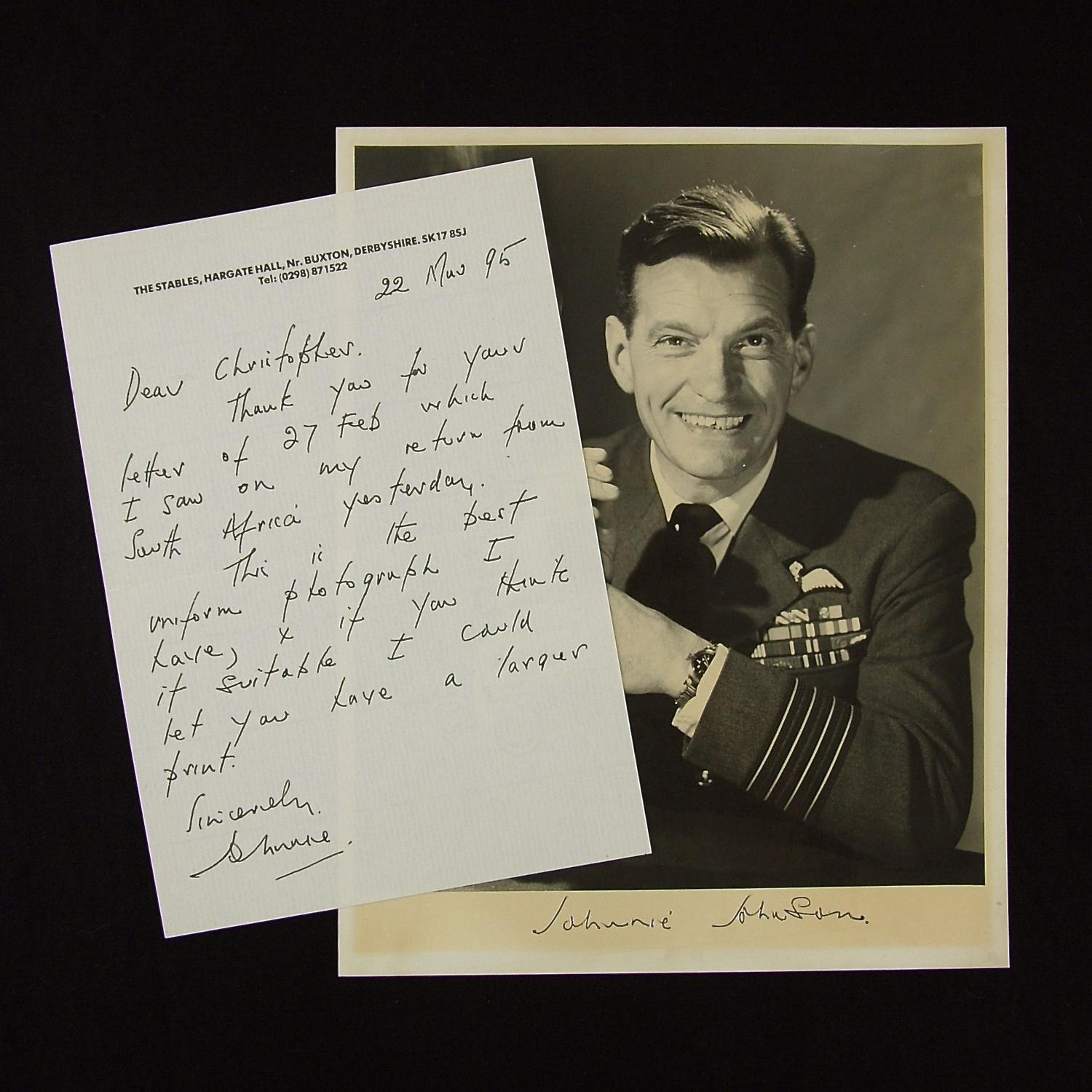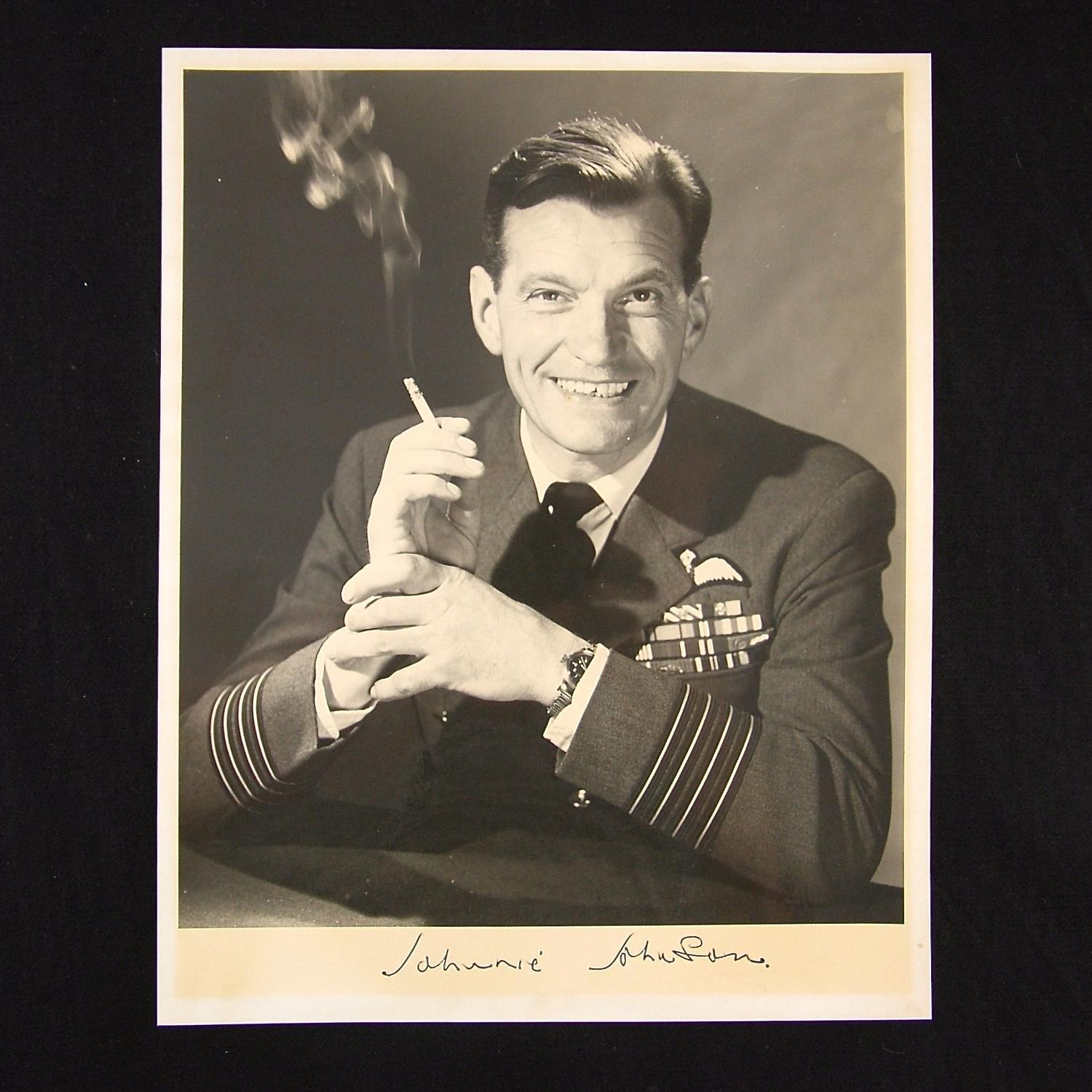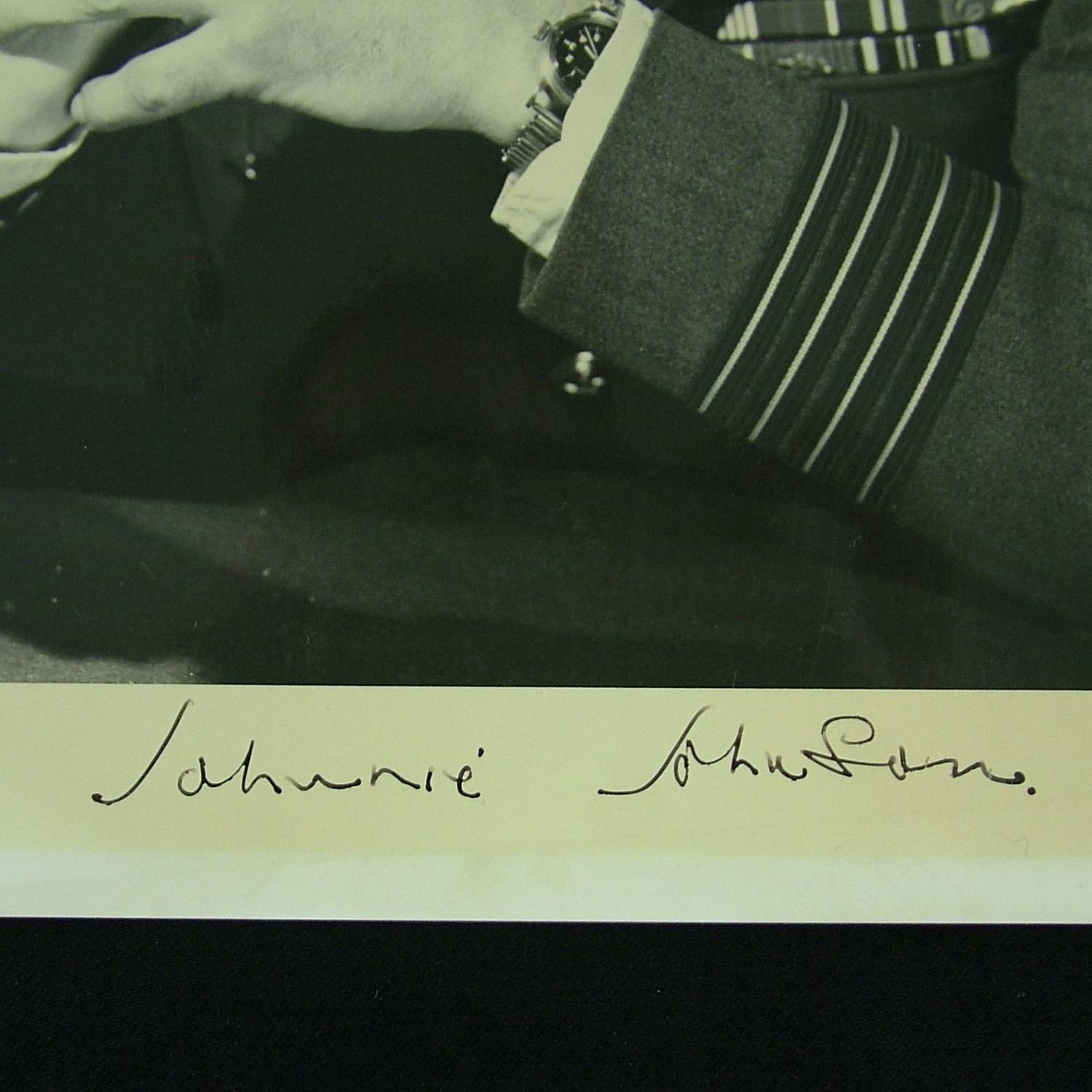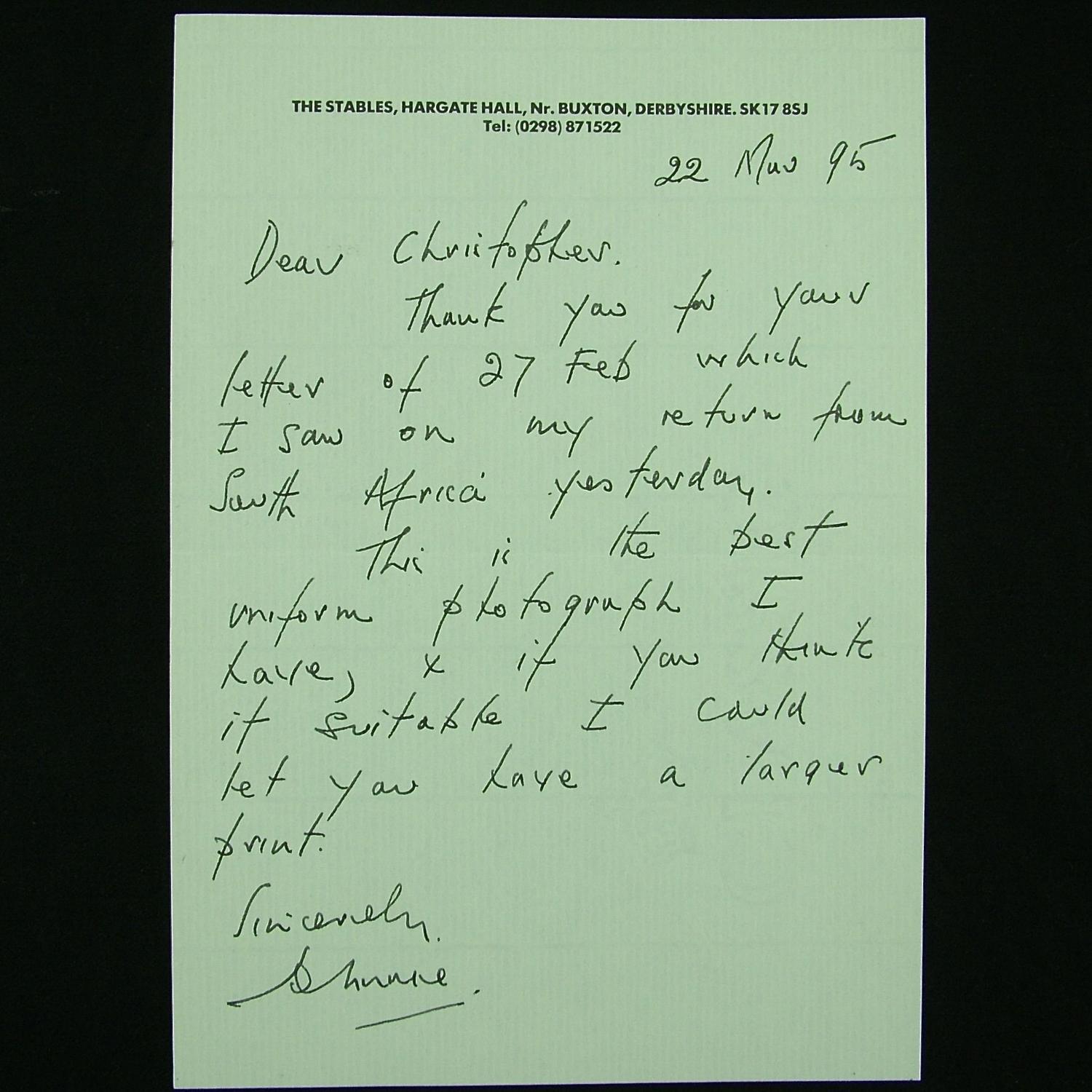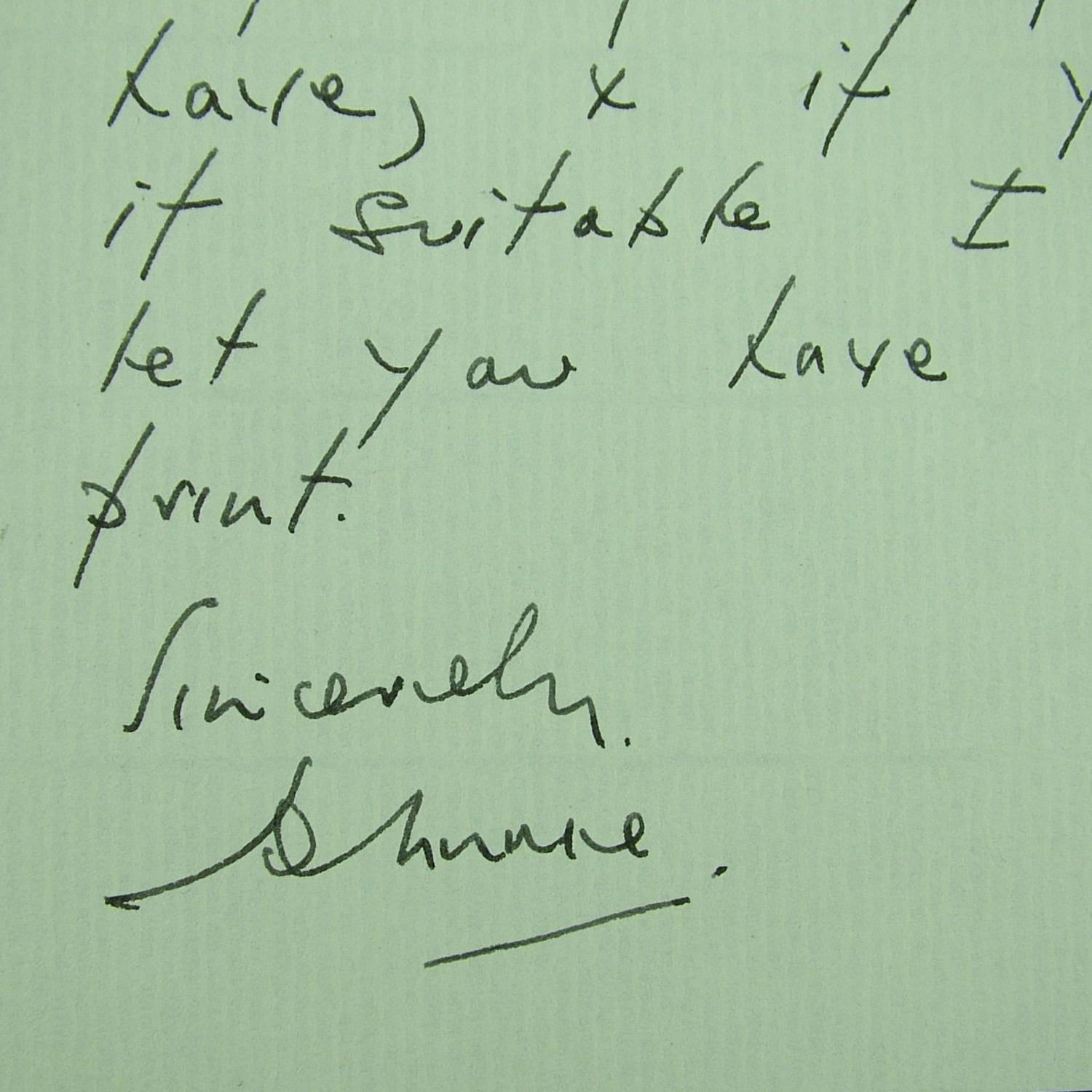
Email: david@historicflyingclothing.com
Web site: https://www.historicflyingclothing.com/
 |
Tel: 01332 345729 Email: david@historicflyingclothing.com Web site: https://www.historicflyingclothing.com/ |
|
Code: P23952
Dimensions:
Superb black and white image of Group Captain James Edgar 'Johnnie' Johnson C.B., C.B.E., D.S.O.(Two Bars), D.F.C. & Bar, D.L., Legion of Merit (U.S.A.), D.F.C. (U.S.A.), Air Medal (U.S.A.), Order of Leopold (Belgium), Croix De Guerre (Belgium), Croix De Guerre (France). He was born in Loughborough, Leicestershire on March 9th 1915 and when a schoolboy, was inspired to be a Royal Air Force fighter pilot by the Aces of the First World War such as Albert Ball, William Bishop, Edward Mannock, James McCuddon, Von Richthofen and the like. He attended Nottingham University and joined the RAFVR undertaking some flight training at No.21 Elementary & Reserve Flying Training School before the outbreak of war when he entered full-time service. Johnson's initial training took place at 22 E.F.T.S. (Cambridge) with further training at 5 F.T.S. before being posted to No.7 Operational Training Unit, Hawarden in August 1940. By the end of the month he was flying with 19 Squadron before a move to 616 Squadron, Kenley in early September. At this point he had just 12 hours flying time on Spitfires. In February 1941 the Squadron moved to Tangmere as part of Douglas Bader's wing alongside 'Cocky' Dundas and Alan Smith. His first victory, a Messerschmitt BF109, came on 26th June followed by two more in July and a further two on September 21st. In the summer of 1942 he was appointed Commanding Officer of 610 (County of Chester) Squadron at Ludham. During his time there he shot down a Focke Wulf 190 in August with a 'probable' in February 1943. Johnson was promoted to Wing Commander and posted to RAF Kenley to lead the Canadian Spitfire Wing there. Between April and September he shot down a staggering ten FW190s, shared another, shot down four Messerschmitt BF109s, shared a further three and also shared a Messerschmitt Bf110, raising his personal total to 25 enemy aircraft. He had a short break from operational flying and was posted to the planning staff at 11 Group, returning in March 1944 to lead 144 Canadian Squadron Wing at RAF Digby, leading them on four sorties over the beaches on D-Day. He scored his 38th and final victory in September 1944. Early in 1945 he was promoted to Group Captain and appointed commanding officer of 125 Wing, equipped with the newly introduced Mk.XIV Spitfire flying out of captured Luftwaffe airbases.
Johnnie Johnson ended the war as the top scoring allied fighter pilot with 38 confirmed victories. He remained in the RAF and was seconded to the U.S.A.F. in 1950 where he served in the United Sates and during the Korean war operating out of Japan flying Douglas B-26 Invaders. In 1957 he flew one of the last RAF operational Spitfires to Biggin Hill to found what is now the Battle of Britain Memorial Flight. He retired from the RAF in 1966 as an Air Vice Marshall and founded the Johnnie Johnson Housing Trust, a non profit housing association that provided homes for thousands of the elderly and disabled and continues to offer quality homes for independent living. Johnson was also an accomplished author and his titles include his WW2 biography 'Wing Leader', 'Full Circle', The Story of Air Fighting'and 'Courage in the Skies' (with Laddie Lucas). He died in January 2001.
This photograph, probably taken in the late 1940s and printed in the 1980s, was sent to the late Chris John, a serious R.A.F. collector, in November 1995. It is clearly signed on the bottom edge in ink and comes with the handwritten accompaning letter from Johnson to John, also signed in ink. The photograph would be well suited to framing for a fabulous desk display. Stock code P23952.
